Medical Alert Bracelets
A medical condition or allergy can affect how you're treated in an emergency, so it's important to let people know. If you find medical alert bracelets easy to wear on a daily basis, our wrist ID range will help you stay safe practically. Choose from lightweight silicone wristbands, stylish sterling silver bracelets, titanium bracelets and more, all designed to carry and share your vital information with medical professionals.
Take a look at our stylish wristwear below.
What is a Medical Alert Bracelet
A medical ID bracelet is a wristband or bracelet engraved with important medical information about the wearer. We use this simple mnemonic to remind us why a medical ID is important:
EVER: Easily visible and easily readable
SAFE: Simple alert for emergencies
HUGS: Heads up guidance system
How Do Medical Alert Bracelets Work
Medical ID bracelets are worn at the wrist - this is one of the major pulse points (the other being the neck) that EMTs, paramedics, and other first responders will use to check the patient’s pulse. The final stage of their primary assessment of the patient is to note any medic alert bracelets or chains that may indicate what is wrong with the patient.
The engraving on the medical ID bracelet will alert medically trained responders to any underlying serious medical condition that could be impacting the patient or that needs to be taken into consideration when deciding the best course of treatment.
What to Engrave on a Medical Alert Bracelet
It is always best to consult with your doctor or specialist to decide what to engrave on your medical ID bracelet. In the event that this is not possible, we have taken advice from the lovely doctors at Concierge Medical (the multi-award-winning private GP service for the Cotswolds and surrounding areas) on what to engrave for a variety of conditions - see our Medical Conditions page for more information.
The best rule of thumb is to consider what a paramedic/the emergency services would need to know should you be unable to communicate with them. You should always include the primary medical condition that they need to know about. You might also want to include your name and an ICE (in case of emergency) phone number.
For example:
John Smith
Diabetic
Allergy: Penicillin
ICE: 0800 999 3669
Benji Ward
Severe Nut Allergy
Carries Adrenaline (ANAPEN)
ICE: 0800 999 3669
If you need to share a lot of information, you may choose to carry a medical ID card and should also engrave “See medical card” on your medical ID bracelet. If you choose a medical ID bracelet that can be engraved on both the front and the back, we recommend that you engrave your medical information on the front and your personal information (name and ICE) on the back.
General advice on engraving:
-
Information should relate to conditions not otherwise discoverable by examination of an unconscious or incapacitated patient.
-
Important medications should be listed.
-
Information should be relevant to life-saving or emergency treatment.
-
Avoid using general terms, e.g. “Allergies: bee stings, nuts” is much more useful than just “Allergies”.
Do I Need a Medical Alert Bracelet?
No one has to wear a medical ID, but perhaps a better question is SHOULD I wear a medical ID?If you have a medical condition that could lead to an emergency or that first responders and medical professionals need to be aware of, YES - you should wear a medical ID bracelet.
NHS Perspective on Medical Alert Bracelets
The NHS advises individuals with serious allergies or conditions like anaphylaxis to wear medical alert jewellery, such as bracelets, to inform others of their condition in emergencies. This recommendation is echoed by various NHS trusts, including University Hospitals Sussex, who suggest that wearing a medical alert bracelet can be crucial in emergency situations .
Where to Buy Medical Alert Bracelets
You can buy medical ID bracelets from us here at The ID Band Company. We have a vast selection to choose from with prices and styles to suit all budgets and tastes.
All of our prices include free engraving and UK mainland delivery so there are no nasty surprises when you get to the checkout.
How Can I Choose the Right Medical Alert Bracelet?
Consider the following factors when choosing a medical bracelet:
-
Material: Options include stainless steel, silicone, leather, titanium and more. Choose one based on comfort and durability to suit your personal style.
-
Ensure Proper Fit: Follow our guide to measure your wrist accurately and choose the correct size.
-
Engraving: Ensure the bracelet has enough space for the information you want us to engrave.
-
Style: Select a design that fits your lifestyle and personal preferences. Make sure it’s something you’ll wear consistently.
How do Medical Bracelets Benefit in Emergencies?
Medical bracelets provide immediate access to critical health information, which can significantly speed up diagnosis and treatment. This information can prevent medical errors and potentially save lives in emergencies where every second counts.
Are There Alternatives to Traditional Medical bracelets?
Yes, alternatives include:
-
Medical alert necklaces: Similar to bracelets but worn around the neck.
-
Medical cards: Our medical identity cards list important details like your medical history, medications, emergency contact and NHS number.
How often Should the Information on a Medical Bracelet Be Updated?
Regularly review and update the information on your medical bracelet to ensure it reflects your current medical condition(s), medications, and emergency contact details.
Can medical bracelets be engraved?
Yes, we offer engraveable medical bracelets and all engraving is free.
What does ‘ICE’ stand for on a medical bracelet?
On a medical bracelet, "ICE" stands for "In Case of Emergency." It indicates a contact person who should be notified in an emergency.
What should I do if I lose my medical bracelet?
If you lose your medical alert bracelet, replace it as soon as possible to ensure you are protected in case of an emergency. Consider keeping a backup bracelet.
Can children wear medical bracelets?
Yes, medical bracelets are highly recommended for children with medical conditions or severe allergies. We offer medical bracelets for children which are available in bright, fun designs with cartoon characters or sleek stainless steel for teens. We create medical bracelets which your child will love to wear.
No more products match your search criteria
vNo more products match your search criteria
Further refine your product selection...
-
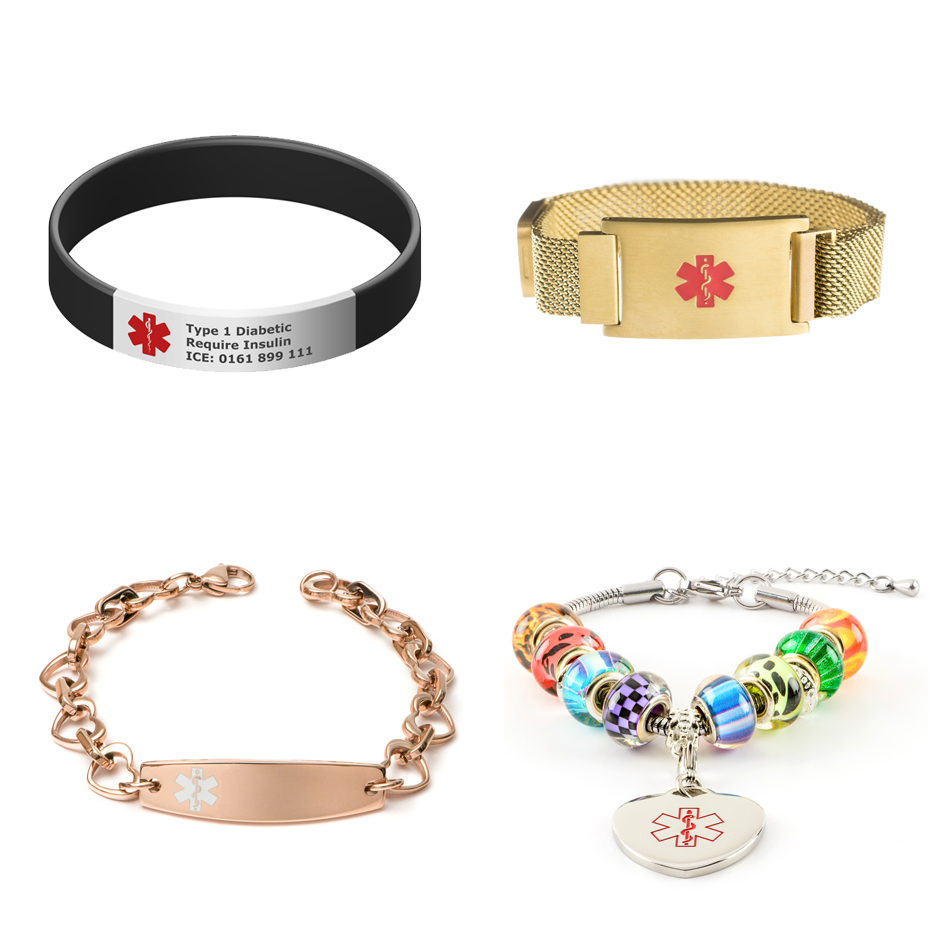
Engraveable Medical Bracelets
-

Silicone & Rubber Medical Bracelets
-
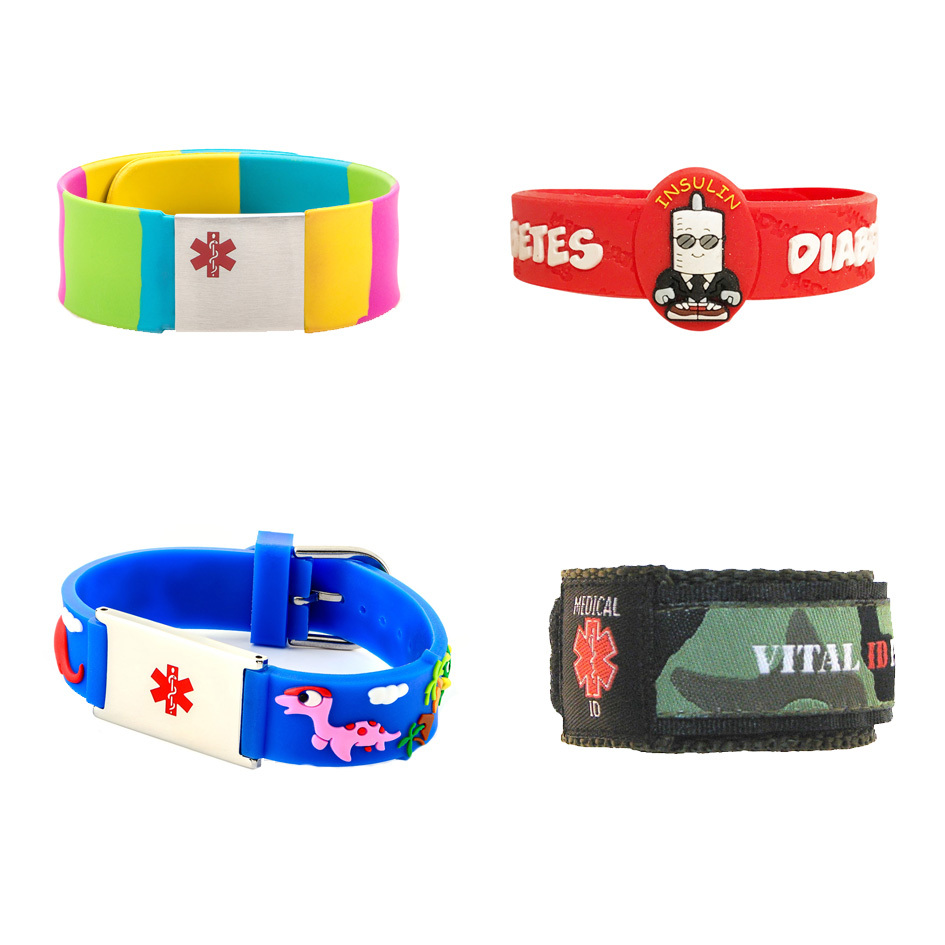
Kids Medical Bracelets
-

Leather Medical Alert Bracelets
-
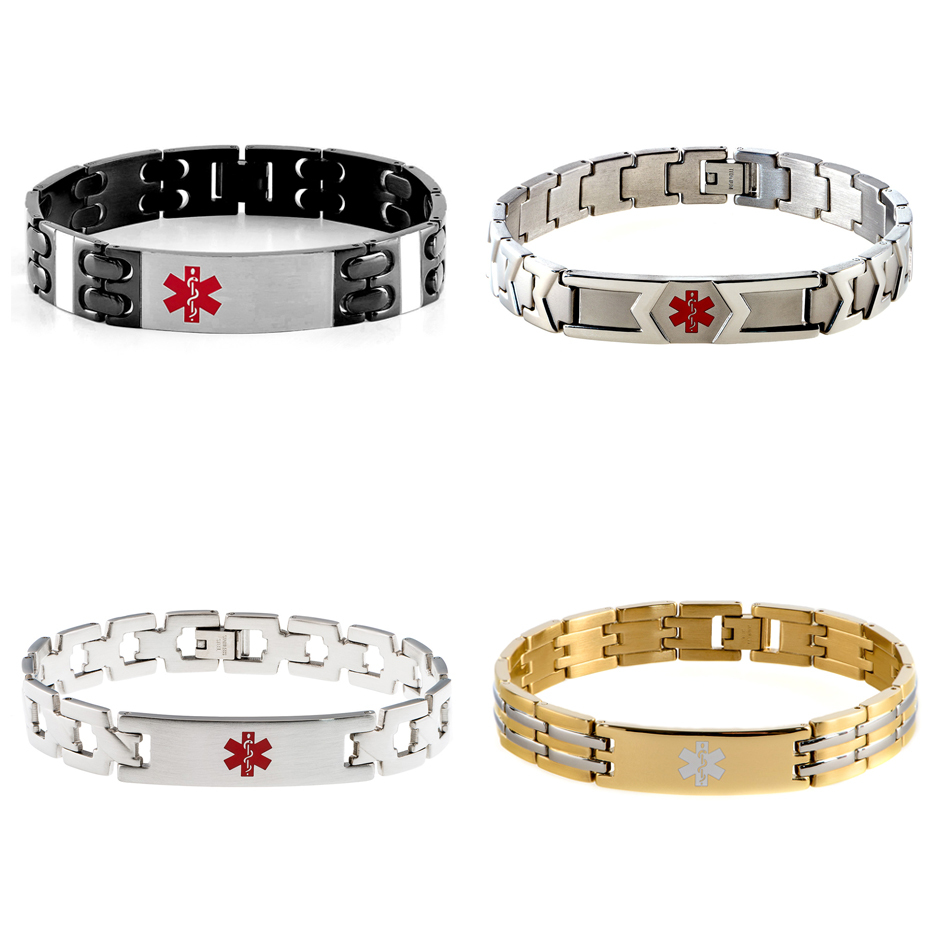
Heavyweight Bracelets
-

Beaded Bracelets
-
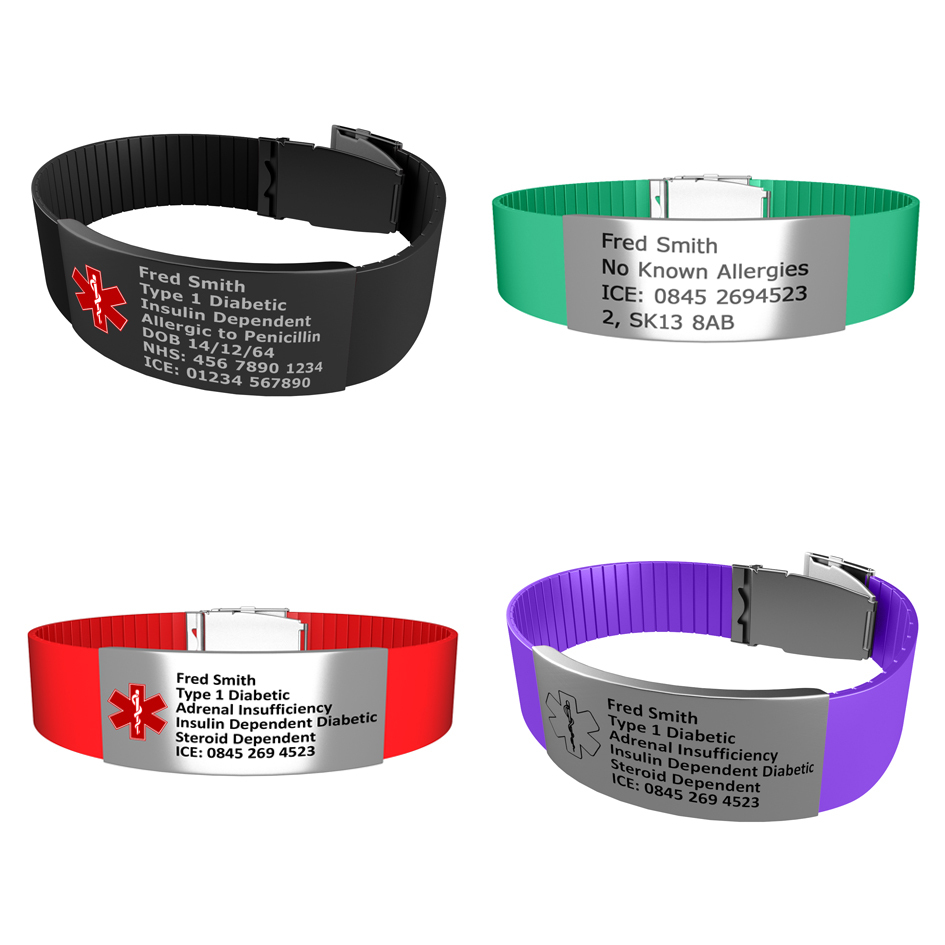
Premier Silicone Bracelets
-

Pre-Printed Silicone
-
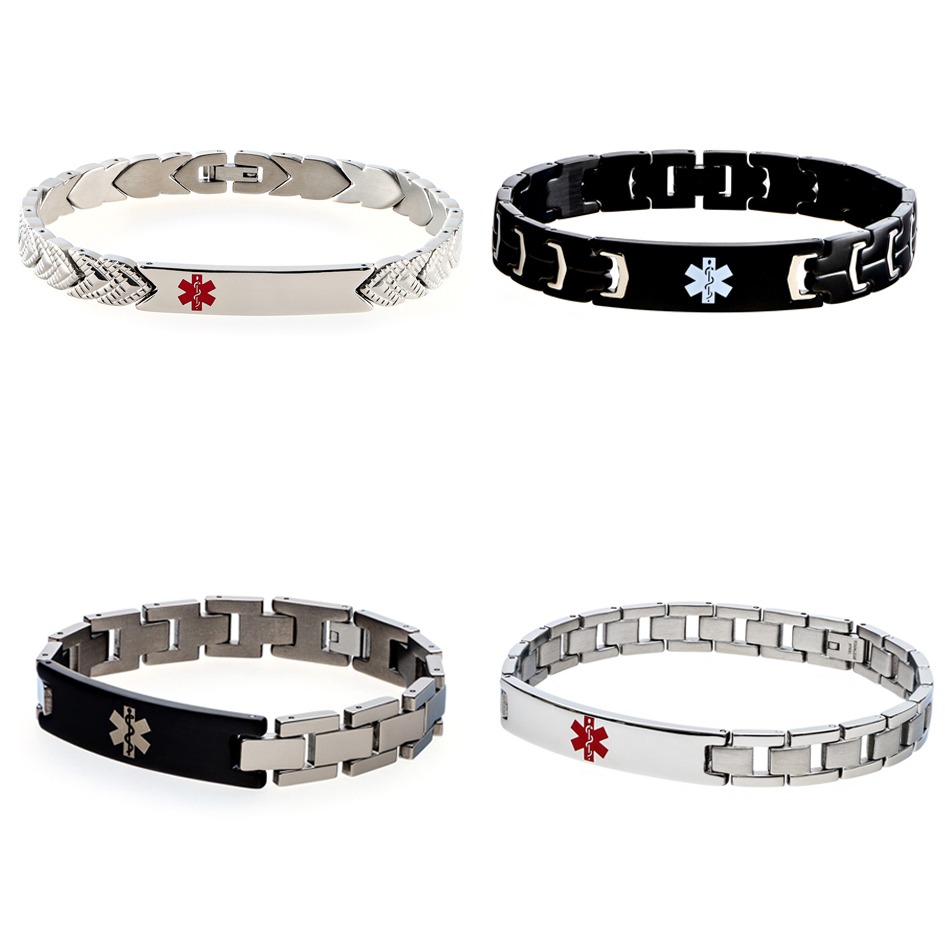
Titanium ID Bracelets
-
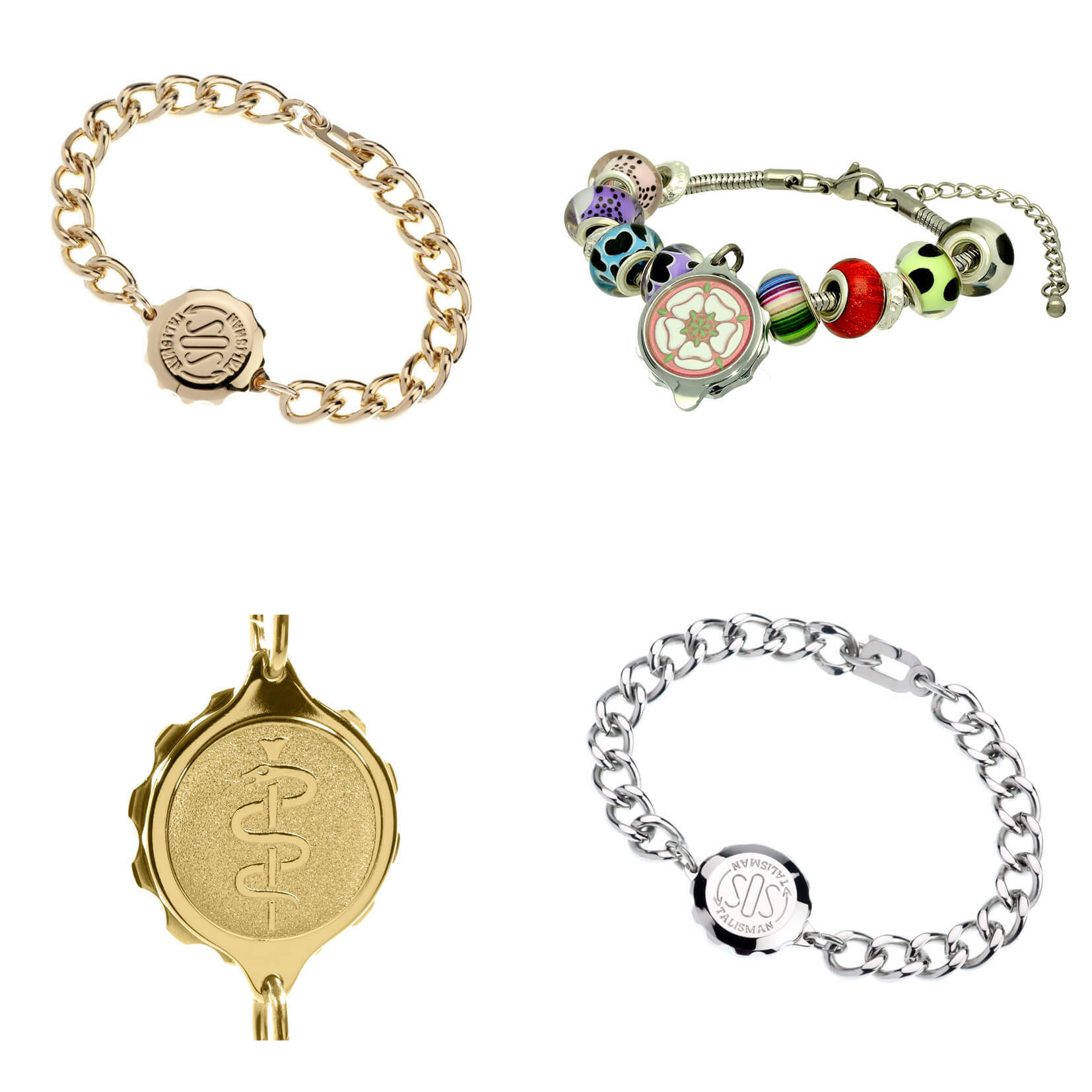
SOS Talisman Bracelets
-

SOS Talisman Watch Style
-

Larger Sizes
-

Smaller Sizes
